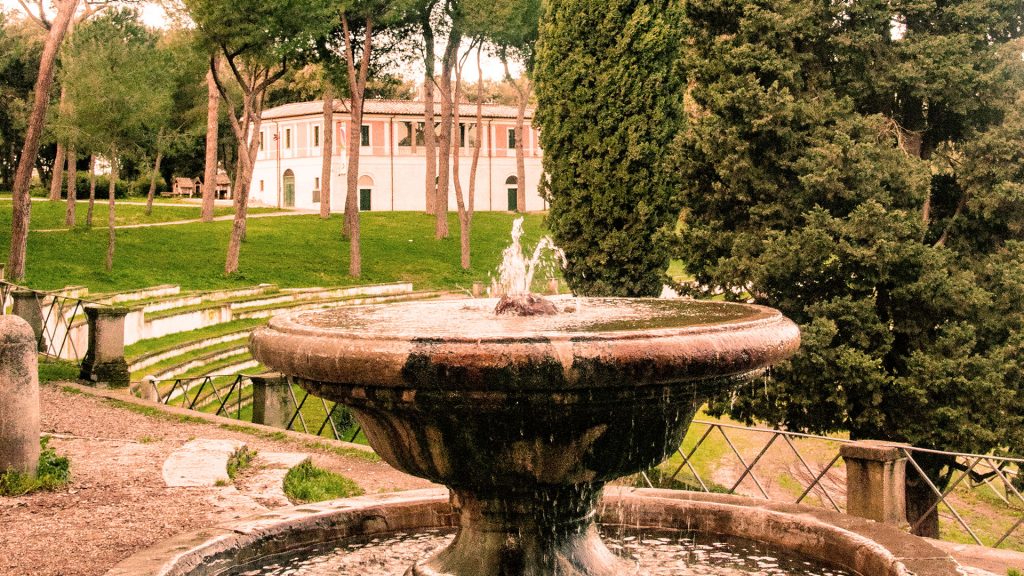
Villa Borghese is the largest park in Rome, with an extension of about 80 hectares that includes secret gardens, monuments, services, squares, and fountains.
Due to its shape and central position, it is commonly known as the “heart of Rome.” It is located in the Pinciano-Parioli district, with a panoramic view of the city and St. Peter’s dome.
History and monuments of Villa Borghese
The history of Villa Borghese begins in 1600, the year in which the construction of the villa was entrusted to Flaminio Ponzo by Cardinal Scipione Borghese, from which it clearly takes its name. The works, carried out by Marcantonio Borghese, first concentrated on the Casino Nobile (transformed into a museum in 900). They were then carried out in the park, whose surface was enlarged by Camillo and Francesco Borghese in the nineteenth century.
The unification of the various plots of land, carried out over the years hand in hand with the park’s expansion, has given the work many souls: from the refined urban park to the wooded area reserved for hunting.
The Roman buildings located in Villa Borghese
Among the best-known buildings of Villa Borghese there are:
- The Casino nobile: built at the beginning of the seventeenth century to house the art collection of Cardinal Scipione Borghese, it can be accessed through a large square with a balustrade. After the Italian State purchased the park in 1902, the casino was transformed into a museum in 1903.
- The Uccelliera: used in the seventeenth century to house rare and precious birds.
- The Sundial (La Meridiana): this pavilion was built in 1688 to complete the third secret garden monumentally. It obviously includes a sundial and many precious decorations.
- Casino degli uffizi and Casino del Graziano: respectively used as a laboratory and for recreational purposes.
- Aranciera and Fortezzuola: now respectively the Carlo Bilotti Museum and the Pietro Canonica House Museum.
- Casina di Raffaello: currently the space is used as a municipal playroom, the “Casina delle Meraviglie.”
- Casina delle rose: always a place of recreation for the guests of the villa. Over the years, it has been a cow barn, a dance hall, a restaurant and a theatre. It currently houses the Casa del Cinema in Rome.
The temples of the Roman villa
Villa Borghese is famous for its rich collection of monuments and temples. The most famous is undoubtedly the Temple of Aesculapius, located on an artificial island in the garden of the lake and reachable with a short boat trip.
The Temple of Diana and the Temple of Antoninus and Faustina contribute to enriching the list of precious monumental works in the park.
Doors and entrances of Villa Borghese
The Capitoline Park has 9 entrances. Two of these are located on Via Pietro Raimondi, which houses the entrance to Domus Daini, a new complex of luxury apartments for sale, with a panoramic view of Rome. The villa also includes 6 Roman doors still well preserved today: The Portale Flaminio Ponzio, with access from via Pinciana; the Propilei delle Aquile and the propilei Neoclassici; the Portale del Leone, which gives access to Parco dei Daini; the Portale del Drago and Portale dei Vasi. In the villa, there are also numerous monuments to illustrious names, including many international writers.
What to see in Villa Borghese
In addition to the countless historical testimonies, Villa Borghese includes many services for city entertainment: the Villa Borghese Zoo, which has now become a “Biopark”; the Casa del Cinema, mentioned above; numerous museums of sculptural and pictorial art; a Shakespearean theatre, which today is Gigi Proietti’s Globe Theatre and countless gardens.
The latter are mainly known for the rich collection of exotic plants and shrubs from around the world. The villa has one of the best-preserved English gardens in Italy and hosts wooded areas that have remained unchanged since the XVII century (the Valle dei Platani, or “Valle dei Cani”, is an example).
Not to be forgotten are the numerous fountains, which contribute to further embellishing the area.
How to get to Villa Borghese
The vast park can be easily reached by underground, taking line A and then getting off at Flaminio or Spagna. Alternatively, many surface service lines will bring you closer to the green lung of Rome, crossing it from one side to the other.
If you arrive by car, you will find the Villa Borghese car park in Viale Muro del Torto, occupying the space once used for the Gallop.
Domus Daini, your home right by Villa Borghese
As anticipated, Domus Daini is a new luxury residential complex located in Via Pietro Raimondi, behind Villa Borghese’s Parco dei Daini.
From your luxury apartment, you can enjoy a panoramic view of the city of Rome. You can welcome your guests with an aperitif bathed in the Capitoline sunset on the large terraces and balconies.
To receive more information on Domus Daini, write to: domusdaini@nervispa.it





You may also like